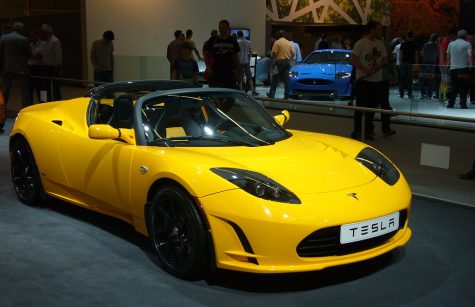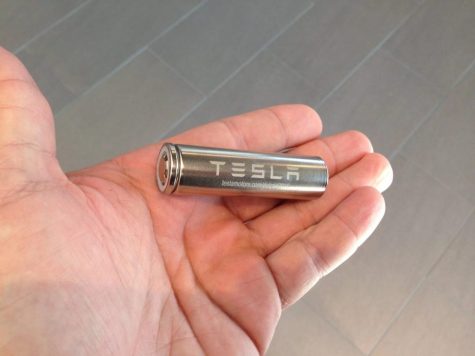Tesla’s Lithium-Ion Battery Sparks A Major Issue
December 22, 2022

In 2022 alone, there have been over 45 reported cases of Tesla vehicles catching on fire globally. Some of these cases were caused by car accidents, while others cases report that the cars spontaneously caught on fire while charging or even while driving. Nonetheless, Tesla vehicles have revolutionized the car industry “to accelerate the world’s transition to sustainable energy… [to] build products that replace some of the planet’s biggest polluters—while trying to do the right thing along the way.” Tesla surely has had a huge impact on humans, and since releasing its first vehicle in 2008, more people are deciding to charge up. However, with every innovation in the world, there will always be undeniable flaws and challenges that come along.
Tesla vehicles can become potentially deadly if they catch on fire. “If that vehicle is in your garage and it’s charging and this problem occurs, it will likely take the car and the garage and potentially the home,” Matt Moore said in a CNBC interview. Vehicle fires are nothing new, with an average of 200,000 vehicles catching on fire each year. In regular gasoline-powered cars, the major cause of vehicle fires is faulty and leaking fuel tanks (which can be a result of poor maintenance). This leaves flammable materials vulnerable to ignition. Tesla vehicles, however, use a battery pack, which contains lithium-ion batteries. These batteries are extremely volatile and dangerous, especially if they catch on fire.
Through the years, lithium-ion batteries have adapted to become more efficient. The energy in these batteries have become more dense and compacted, which has allowed for greater energy usage and better batteries. However, it has also left them more vulnerable. One of the key ingredients of lithium-ion batteries is liquid organic electrolytes, which, unfortunately, are very flammable. The battery itself can get into a thermal runaway situation, where the battery enters an uncontrollable self-heating state, boiling the electrolyte liquid and causing it to spark a fire.
Tesla has attempted to combat this issue by using a battery management system, which optimizes the ideal temperature range in which the battery is used. However, there are still rare instances in which a damaged battery or a defect can cause issues. These issues are hard to pinpoint because it is difficult to recreate or even study a certain “condition” a lithium-ion battery was in.

“Electric vehicle fires can happen due to defects in the actual battery cells or in the pack architecture,” Lora Koldny, a leading Tech Reporter at CNBC, said. “The battery pack design matters and so does the quality of manufacturing.” In addition, when these flawed batteries are fully charged, that’s when they are the most dangerous as they have the greatest potential to cause a large fire. This problem is unique to Tesla and EVs (electric vehicles), and can cause non-crash fires while the owner is driving their Tesla or even while the Tesla is being charged.
Most firefighters and their corresponding departments are confronting Tesla fires for the first time. Putting out these fires requires different methods and tactics as opposed to standard vehicles. Firefighters not only need to reach the internal plastics of the vehicle, but they need to use water to cool the bottom of the battery. The major issues are the location and accessibility of the battery pack. It is usually held within a steel-framed case and located at the bottom of the vehicle, which puts it out of easy reach. Additionally, the fire from an EV can spread to other vehicles, making the job of firefighters even more difficult. Another point of worry is that the industry is evolving too quickly for fire departments to keep up. Every Tesla and EV vehicle is different, so the approaches to putting out a fire for each vehicle can be different. “[Then] you’ve got this whole kind of supply chain of people that are potentially at risk until that vehicle is broken up,” Emma Sutcliffe, director of EV FireSafe, said.
Although lithium-ion batteries pose a large and expensive problem, automakers are experimenting with different batteries and different building approaches that could reduce the risk of fire-related incidents. In late 2021, Tesla announced that it would be switching more of its vehicles to LFP batteries (Lithium-Ion Phosphate). These LFP batteries are believed to be safer for Tesla vehicles as they don’t go to as high of a voltage as regular lithium-ion batteries and because they reduce the likelihood of a thermal runaway situation. Experts and researchers are also working on technologies and methods that will reduce the fire hazard of Tesla vehicles.

















































































































































